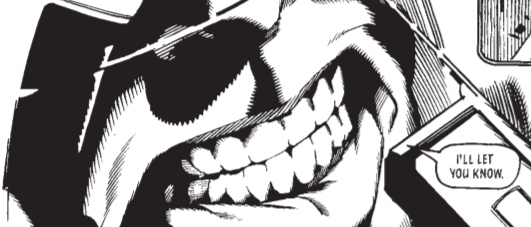
Evil Dead poster art that I’d argue has transcended film iconography and become part of the Jungian collective unconscious
(1) EVIL DEAD (1981-1992 / 2013-2023)
Hail to the king, baby!
What else? The Evil Dead, the film and the following franchise, are not high art but they embody (in virtually every sense of that word) the archetypal B-grade horror movie in all its fun and glory, with tongue ever more firmly in cheek.
As stated by TV Tropes – “in 1979, a bunch of college dropouts got together in a cabin in Tennessee and made a film with a standard B-Movie plot; this film was The Evil Dead. The film, which was directed by Sam Raimi and starred (the chin himself) Bruce Campbell, succeeded through elaborate gore effects, slick cinematography, and sheer audacity to make enough money to warrant two sequels and get into the public consciousness”.
It is remarkable that a movie made by college dropouts on a shoestring budget – and effects that resemble claymation or plasticine at times – should have any impact upon public consciousness, let alone the enduring impact it and its sequels had upon mine.
“Join us, Ashleeeeey!”
You know you’re in a for a gory horror ride in the first movie, as the classic group of teenagers heads to the classic cabin in the woods. There they unfortunately locate the demonic Book of the Dead or Necronomicon (borrowing from Lovecraft) which was studied by the cabin’s previous occupant – and even more unfortunately play the tape of the recitation invoking the Sumerian demons (although something seems to have been stalking the cabin and woods even prior to that recitation). Those demons possess each of them in turn, turning them into the titular evil dead which then attack the others, until ultimately only one of them, Ashley, is left to fend off the demons (including his girlfriend). This first film works quite effectively as horror, particularly as Ashley or Ash becomes the lone survivor fending off the evil dead in the seemingly eldritch architecture of the cabin. I mean, it’s probably the frantic cinematography but how many rooms does that cabin have? It’s like the Tardis in there. And you know it’s going to get bloody (and oh boy does it ever) when a further playing of the tape reveals that the only way to destroy the evil dead is…bodily dismemberment! Ewww!
The second film (Evil Dead 2), a partial remake and partial sequel, was made with more money but lacks the pure horror of the first, as embracing the absurdity of the premise, it moved from horror to comedy (and Ash became more invulnerable to the demonic threat).
The third film (Army of Darkness) fully embraced all its cheesy goodness and rule of cool as it almost entirely abandoned horror altogether for dark fantasy comedy, yet utterly glorious as a result (while Ash completed his transition into a virtually indestructible superhero). It follows from the second film, which saw Ash magically transported through time to the Middle Ages (yeah, it’s like that), in medieval Europe or perhaps the Latin kingdoms of the Crusades, where he soon has to face off against an undead army. It had the biggest budget of the original trilogy, as well as being the most well-known and quoted, with its memetic one-liners.
The franchise saw a remake of the original film with the Evil Dead film of 2013 – decent enough but somewhat forgettable as lacking the same pulpy fun and tongue-in-cheek humor of the original. That changed dramatically with the fifth entry into the franchise, Evil Dead Rise in 2023, which returned to the spirit and style of the original trilogy (and Evil Dead mythos) but with its own fun twists – and also perhaps the only Deadite that’s strangely…arousing. Whose your mummy?
The franchise has also seen a TV series, comics adaptations, video games…and a theatre musical?
Groovy!
RATING: 5 STARS*****
S-TIER (GOD-TIER)










